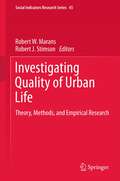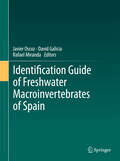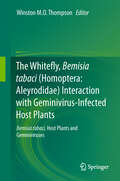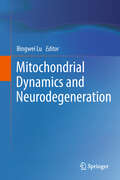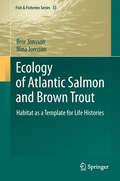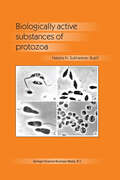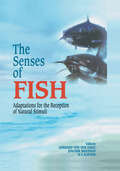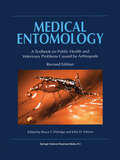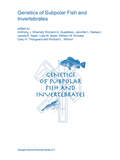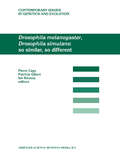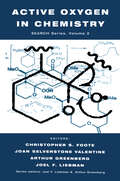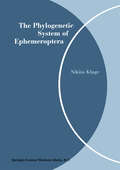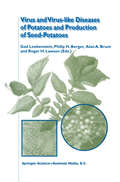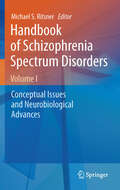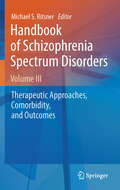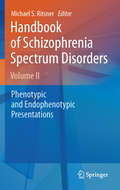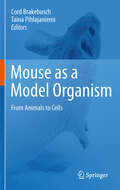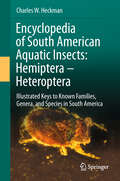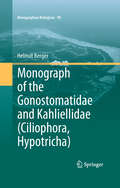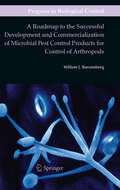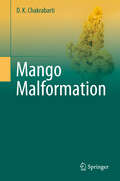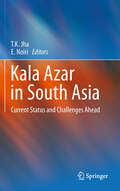- Table View
- List View
Investigating Quality of Urban Life: Theory, Methods, and Empirical Research (Social Indicators Research Series #45)
by Robert W. Marans and Robert J. StimsonThe study of quality of urban life involves both an objective approach to analysis using spatially aggregated secondary data and a subjective approach using unit record survey data whereby people provide subjective evaluations of QOL domains. This book provides a comprehensive overview of theoretical perspectives on QOUL and methodological approaches to research design to investigate QOUL and measure QOL dimensions. It incorporates empirical investigations into QOUL in a range of cities across the world.
Identification Guide of Freshwater Macroinvertebrates of Spain
by Javier Oscoz, David Galicia and Rafael MirandaAs a result of the European Commission’s concern for the status of continental waters, and as a clear reflection of the notion of water as heritage to be conserved, in the year 2000 the Water Framework Directive (2000/60/CE) was enacted, its goal being to establish a framework to protect water and the different aquatic ecosystems by requiring the Member States to achieve a good ecological status in all their waters by 2015. Like all ecosystems, freshwater ecosystems undergo physical, chemical and energy-related changes, both of natural and anthropogenic origin. These disturbances affect the organisms living in them and those who utilize their resources. Therefore, evaluating these changes has become a very important task in order to better understand aquatic systems. The study and analysis of the ecological status of these ecosystems in relation to their conservation status and water quality is thus a fundamental tool for a more efficient and rational management of their resources, that is, a management that does not threaten the ecosystem. The present guide for the identification of Spanish freshwater macroinvertebrates aims to facilitate the job of those who go to great lengths to identify them in order to then determine biotic indices. It is not the aim of this book to serve as a zoological treaty, nor does it claim to add new information on the biology or the ecology of the taxa covered. This book is, simply, a working tool explicitly designed to facilitate the identification of the Spanish macroinvertebrates and the subsequent computing of biotic indices.
The Whitefly, Bemisia tabaci (Homoptera (Homoptera (Homoptera (Homoptera: Aleyrodidae) Interaction with Geminivirus-Infected Host Plants: Bemisia tabaci, Host Plants and Geminiviruses
by Winston M.O. ThompsonThe book presents a chronology of events of B. tabaci and geminiviruses, and an overview within the Caribbean and Latin America. The pathosystems involving Tomato yellow leaf curl virus, Cotton leaf curl virus and the cassava mosaic viruses are discussed. Data is presented on amino acid concentrations influencing B. tabaci and thus serves the basis for holidic diets. The essential molecular techniques for B. tabaci identification and classification are included with factors to consider for appropriate applications; an essential working guide for graduate students and researchers in the molecular field. Excellent photos portray symptoms of geminivirus-infecting crops: tomato, cotton, cassava, legumes and cucurbits; an important guide for researchers and growers. The novel insecticides, their mode of action and specificity; emphasize the applications of these within IPM programs.
Mitochondrial Dynamics and Neurodegeneration
by Bingwei LuMitochondria are essential organelles in eukaryotic cells that control such diverse processes as energy metabolism, calcium buffering, and cell death. Recent studies have revealed that changes in mitochondrial morphology by fission and fusion, a process known as mitochondrial dynamics, is particularly important for neuronal function and survival. Defects in this process are commonly found in neurodegenerative diseases, offering a new paradigm for investigating mechanisms of neurodegeneration. To provide researchers working on neurodegenerative diseases and mitochondria with updated information on this rapidly progressing field, we have invited experts in the field to critically review recent progresses and identify future research directions. The topics include genetics of mitochondrial dynamics, mitochondrial dynamics and bioenergetics, autophagy, apoptosis, and axonal transport, and its role in neurological diseases, including Alzheimer’s, Parkinson’s, and Huntington’s diseases.
Ecology of Atlantic Salmon and Brown Trout: Habitat as a template for life histories (Fish & Fisheries Series #33)
by Bror Jonsson Nina JonssonDestruction of habitat is the major cause for loss of biodiversity including variation in life history and habitat ecology. Each species and population adapts to its environment, adaptations visible in morphology, ecology, behaviour, physiology and genetics. Here, the authors present the population ecology of Atlantic salmon and brown trout and how it is influenced by the environment in terms of growth, migration, spawning and recruitment. Salmonids appeared as freshwater fish some 50 million years ago. Atlantic salmon and brown trout evolved in the Atlantic basin, Atlantic salmon in North America and Europe, brown trout in Europe, Northern Africa and Western Asia. The species live in small streams as well as large rivers, lakes, estuaries, coastal seas and oceans, with brown trout better adapted to small streams and less well adapted to feeding in the ocean than Atlantic salmon. Smolt and adult sizes and longevity are constrained by habitat conditions of populations spawning in small streams. Feeding, wintering and spawning opportunities influence migratory versus resident lifestyles, while the growth rate influences egg size and number, age at maturity, reproductive success and longevity. Further, early experiences influence later performance. For instance, juvenile behaviour influences adult homing, competition for spawning habitat, partner finding and predator avoidance. The abundance of wild Atlantic salmon populations has declined in recent years; climate change and escaped farmed salmon are major threats. The climate influences through changes in temperature and flow, while escaped farmed salmon do so through ecological competition, interbreeding and the spreading of contagious diseases. The authors pinpoint essential problems and offer suggestions as to how they can be reduced. In this context, population enhancement, habitat restoration and management are also discussed. The text closes with a presentation of what the authors view as major scientific challenges in ecological research on these species.
Atoms of Mind: The "Ghost in the Machine" Materializes
by W.R. KlemmThis book describes the author’s view of how the mind “thinks” at various levels of operation. These levels include nonconscious mind (as in spinal/brainstem reflexes and neuroendocrine controls), subconscious mind, and conscious mind. In the attempt to explain conscious mind, there is considerable critique of arguments over whether or not free will is an illusion. Finally, the author summarizes current leading theories for consciousness (Bayesian probability, chaos, and quantum mechanics) and then presents his own theory based on patterns of nerve impulses in circuits that are interlaced coherently into larger networks.
Biologically Active Substances of Protozoa
by N.N. Sukhareva-BuellThe search for new producers of biologically active substances (BAS) against human and animal diseases continues to be an important task in biology and medicine. Experimental work must be carried out well in advance of need because it takes an average of ten years to develop a new medication, as well as additional time to put it on the market. Study of the Protozoa forms a special branch of biology - protozoology. The traditional fields of protozoology are taxonomy, phylogeny, morphology, cytology, evolution, ecology and host parasite-interactions. The Protozoa is the only taxon among the microscopic organisms, which has not been persistently studied as a source of BAS. This book then is the result of the research on the project: "Biologically active substances of the Mastigophora (Flagellates)". The research was carried out at the Laboratory of Antibiotics, Department of Microbiology, Biological Faculty of Moscow State University. Articles of other authors on the matter have been considered as the important part of this reference book. The goal of the reference book is to elucidate scientific approaches, which lead to obtaining biologically active substances from cultures of protozoa; the book reviews the historical background in connection with contemporary development of the field. N.N. Sukhareva ACKNOWLEDGMENTS The research was performed in fruitful cooperation with my research associates (V. Urinyuk, T. Titiova, L. Udalova, R. Zeleneva, V. Brusovanik, M. Zaretskaya), postgraduate students (N. Kalenik, M. Chuenkova, V. Vasilevskaya, V. Khorokhorina), my colleagues at Moscow State University (Yu. Kozlov and I.
The Senses of Fish: Adaptations for the Reception of Natural Stimuli
by Gerhard Von Der Emde Joachim Mogdans B. G. KapoorFish comprise more than 50% of all living vertebrates and are found in a wide range of highly diverse habitats like the deep sea, the shoreline, tide pools, tropical streams and sweetwater ponds. During evolution, the senses of fish have adapted to the physical conditions of the environment in which different species live. As a result, the senses of fish exhibit a remarkable diversity that allows different species to deal with the physical constraints imposed by their habitat. In addition, fish have evolved several `new' sensory systems that are unique to the aquatic environment. In this book, examples of adaptation and refinement are given for six sensory systems: The visual system, The auditory system, The olfactory system, The mechanosensory lateral line system, The taste system, The electrosensory system. In each case, the environmental conditions under which a particular group of fish lives are analyzed. This is followed by a description of morphology and physiology of the sensory system and by an evaluation of its perceptional capabilities. Finally, the sensory adaptations to the particular conditions that prevail in the habitat of a species are highlighted. The various examples from different groups of fish presented in this book demonstrate the impressive capability of fish sensory systems to effectively overcome physical problems imposed by the environment.
Medical Entomology: A Textbook on Public Health and Veterinary Problems Caused by Arthropods
by B. F. Eldridge J. D. EdmanGenetics of Subpolar Fish and Invertebrates (Developments in Environmental Biology of Fishes #23)
by Anthony J. Gharrett Richard G. Gustafson Jennifer L. Nielsen James E. Seeb Lisa W. Seeb William W. Smoker Gary H. Thorgaard Richard L. WilmotFisheries genetics researchers will find invaluable the thirty-eight peer-reviewed contributions in this book, presented at the 20th Lowell Wakefield Fisheries Symposium "Genetics of Subpolar Fish and Invertebrates," held in May 2002 in Juneau, Alaska. Looming over concerns of lost fisheries stocks and persistent erosion of genetic variability are predictions of global warming, which may further tax genetic resources. One consequence is an increased reliance on genetic applications to many aspects of fisheries management, aquaculture, and conservation. The contributions in this book are important to modern fisheries science and genetics, and illustrate the evolution of the field over the past decade. The improved technology provides tools to address increasingly complicated problems in traditional applications and ecological and behavioral studies. The union between molecular and quantitative genetics, where many of the major questions about population structure and evolution remain unanswered, will also benefit from the new technologies.
Drosophila melanogaster, Drosophila simulans: So Similar, So Different (Contemporary Issues in Genetics and Evolution #11)
by Pierre Capy Patricia Gibert Ian BoussyActive Oxygen in Chemistry (Structure Energetics and Reactivity in Chemistry Series #2)
by Christopher S. Foote Joan Selverstone Valentine A. Greenberg Joel F. LiebmanTaking an interdisciplinary approach, this book and its counterpart, Active Oxygen in Biochemistry, explore the active research area of the chemistry and biochemistry of oxygen. Complementary but independent, the two volumes integrate subject areas including medicine, biology, chemistry, engineering, and environmental studies.
Virus and Virus-like Diseases of Potatoes and Production of Seed-Potatoes
by Gad Loebenstein P. H. Berger A. A. Brunt R. H. LawsonThis is a comprehensive up-to-date treatise including information on virus-, viroid-, and phytoplasma-induced potato diseases. The chapters of this book were written by internationally well-known experts and include novel techniques of detection, virus isolation, transmission, and epidemiology of the pathogens.
Handbook of Schizophrenia Spectrum Disorders, Volume I: Conceptual Issues and Neurobiological Advances
by Michael S. S. RitsnerA few disorders have some of the same symptoms as schizophrenia including schizoaffective disorders, schizophreniform disorder, schizotypal and schizoid personality disorders, delusional disorder, and autism (schizophrenia spectrum disorders). Since the 2000 there has been significant progress in our understanding of the early presentations, assessment, suspected neuropathology, and treatment of these disorders. Recent technological breakthroughs in basic sciences hold promise for advancing our understanding of the pathophysiology of schizophrenia spectrum disorders. This collective monograph reviewers recent researches regarding the origins, onset, course, and outcome of schizophrenia spectrum disorders. In particular, this book will be illustrate new developments in terms of conceptual models, and research methodology, genetics and genomics, brain imaging and neurochemical studies, neurophysiology and information processing in schizophrenia spectrum disorders patients. Also will be highlighted new developments in our understanding of the childhood psychosis, prodromal and first-episode states, in treatment and rehabilitation. Thus, the purpose of this book is to provide up-to-date overview of the rapid advances made in the clinical and basic science studies supporting our understanding of the relationship between cerebral processes and clinical, cognitive and other presentations of the schizophrenia spectrum disorders. In addition, this book aims to monitor important research developments, which may be relevant to treatment, and rehabilitation of patients.
Handbook of Schizophrenia Spectrum Disorders, Volume III: Therapeutic Approaches, Comorbidity, and Outcomes
by Michael S. S. RitsnerA few disorders have some of the same symptoms as schizophrenia including schizoaffective disorders, schizophreniform disorder, schizotypal and schizoid personality disorders, delusional disorder, and autism (schizophrenia spectrum disorders). Since the 2000 there has been significant progress in our understanding of the early presentations, assessment, suspected neuropathology, and treatment of these disorders. Recent technological breakthroughs in basic sciences hold promise for advancing our understanding of the pathophysiology of schizophrenia spectrum disorders. This collective monograph reviewers recent researches regarding the origins, onset, course, and outcome of schizophrenia spectrum disorders. In particular, this book will be illustrate new developments in terms of conceptual models, and research methodology, genetics and genomics, brain imaging and neurochemical studies, neurophysiology and information processing in schizophrenia spectrum disorders patients. Also will be highlighted new developments in our understanding of the childhood psychosis, prodromal and first-episode states, in treatment and rehabilitation. Thus, the purpose of this book is to provide up-to-date overview of the rapid advances made in the clinical and basic science studies supporting our understanding of the relationship between cerebral processes and clinical, cognitive and other presentations of the schizophrenia spectrum disorders. In addition, this book aims to monitor important research developments, which may be relevant to treatment, and rehabilitation of patients.
Handbook of Schizophrenia Spectrum Disorders, Volume II: Phenotypic and Endophenotypic Presentations
by Michael S. RitsnerA few disorders have some of the same symptoms as schizophrenia including schizoaffective disorders, schizophreniform disorder, schizotypal and schizoid personality disorders, delusional disorder, and autism (schizophrenia spectrum disorders). Since the 2000 there has been significant progress in our understanding of the early presentations, assessment, suspected neuropathology, and treatment of these disorders. Recent technological breakthroughs in basic sciences hold promise for advancing our understanding of the pathophysiology of schizophrenia spectrum disorders. This collective monograph reviewers recent researches regarding the origins, onset, course, and outcome of schizophrenia spectrum disorders. In particular, this book will be illustrate new developments in terms of conceptual models, and research methodology, genetics and genomics, brain imaging and neurochemical studies, neurophysiology and information processing in schizophrenia spectrum disorders patients. Also will be highlighted new developments in our understanding of the childhood psychosis, prodromal and first-episode states, in treatment and rehabilitation. Thus, the purpose of this book is to provide up-to-date overview of the rapid advances made in the clinical and basic science studies supporting our understanding of the relationship between cerebral processes and clinical, cognitive and other presentations of the schizophrenia spectrum disorders. In addition, this book aims to monitor important research developments, which may be relevant to treatment, and rehabilitation of patients.
Mouse as a Model Organism: From Animals to Cells
by Cord Brakebusch and Taina PihlajaniemiCell culture based research is important for our understanding of biological processes at the cellular and molecular level. Using this approach, the previous decades have produced a wealth of mechanistic information in all areas of biomedical research. Such in vitro research, however, lacks the complexity of in vivo investigations, where many different cell types interact with each other in a normal, three-dimensional environment, with normal levels of cytokines and growth factors. Furthermore, complex human diseases, such as cancer, diabetes or chronic inflammation, can only be modeled in vivo. Due to its small size, its short reproduction time, and the possibility to introduce specific gene mutations, the mouse has become the favourite mammalian model organism to study in vivo function of genes during development and in disease. This book combines review articles on selected subjects presented at the symposium “Mouse as a Model Organism – From Animals to Cells”, held in Rovaniemi, Finland, 2009. Among other topics, high-throughput phenotyping of mouse mutants, mouse phenotypes dependent on nature and nuture, and a spectrum of in vivo, ex vivo and in vitro methods to study cancer in mice are described. This book will give an excellent introduction to scientists interested in the use of mice as a model to understand complex biological questions in the post-genomic era. It will highlight the possibilities, but also discuss the current problems and shortcomings, to give a realistic view of the current state-of-art in this fascinating field of biomedical research.
Encyclopedia of South American Aquatic Insects: Illustrated Keys to Known Families, Genera, and Species in South America (Encyclopedia of South American Aquatic Insects)
by Charles W. HeckmanHemiptera - Heteroptera encompasses the three well-defined suborders of the true bugs which are adapted to an aquatic or littoral habitat. The book begins with a section on the biology these insects and provides illustrations of the basic features of their morphology and outlines the larval development. Brief outlines of the ecological and zoogeographical peculiarities of the three aquatic suborders are presented individually, and various methods for observing, collecting, preserving, rearing, and examining specimens are discussed.Most of the book is devoted to keys for the identification of adults to species, and notes are provided that will help recognize the known larvae. Unlike most other aquatic insects, the larval instars of the heteropteran species closely resemble the adults in their morphology, preferred habitats, and feeding habits. Therefore, distinguishing features of those relatively few larvae which have been described in detail are usually mentioned in the keys to the adults rather than being included in separate keys. In addition to the most important features for determining the individual species, many keys include additional notes on the morphology, which is intended to give the user a better chance of recognizing specimens of species not yet known to science. After the currently recognized name of each species, the known range is provided. Regions of the world outside of South America, South American countries, and the states of Brazil from which the species has been reported are listed. Following the range information, major synonyms previously used for the species in the literature are provided. If subspecies have been described and are still recognized as such, they are also discussed. Finally, if the status of the species is regarded as uncertain because of a poor description, strong resemblance to another species, or any other reason, a note is added that a detailed study will be necessary to clarify the status of the taxon. Taxonomic revisions in the book itself are strictly avoided.To provide the user of the keys with maximum assistance in making reliable identifications, the book is richly illustrated with pen and ink drawings of thousands of individual morphological structures arranged in 820 figures. The book is intended to make a significant impact toward popularizing the study of South American water bugs by assembling and condensing the information in hundreds of individual publications on the group, which appeared in many books and journals published in many different countries over the past 200 years. Some of these works are very difficult to obtain in South America, and their lack creates serious impediments to systematic, ecological, and zoogeographical research. In the more than 730 titles appearing in the bibliography, the original descriptions and revisions of almost all South American species can be found.
Phenology: An Integrative Environmental Science (Tasks for Vegetation Science #39)
by Mark D. SchwartzPhenology is the study of plant and animal life cycle events, which are triggered by environmental changes, especially temperature. Wide ranges of phenomena are included, from first openings of leaf and flower buds, to insect hatchings and return of birds. Each one gives a ready measure of the environment as viewed by the associated organism. Thus, phenological events are ideal indicators of the impact of local and global changes in weather and climate on the earth's biosphere. Assessing our changing world is a complex task that requires close cooperation from experts in biology, climatology, ecology, geography, oceanography, remote sensing and other areas. This book is a synthesis of current phenological knowledge, designed as a primer on the field for global change and general scientists, students and interested members of the public. With contributions from a diverse group of over fifty phenological experts, covering data collection, current research, methods and applications, it demonstrates the accomplishments and potential of phenology as an integrative environmental science.
Politics and Development in a Transboundary Watershed: The Case of the Lower Mekong Basin
by Joakim Öjendal, Stina Hansson and Sofie HellbergWater - and its governance - is becoming a global concern partly because it is turning into a goods in short supply, with devastating effects on literally billions of people, but also because it is the "carrier" of global warming; whether through irregular weather patterns or through flooding, water is how global warming will be 'felt'. The lion's share of the globally available fresh water resources is to be found in transboundary systems. In spite of its significance, the generated knowledge on how to deal with transboundary waters is weak and leaves policy makers with seemingly unavoidable, trade-off dilemmas and prioritizations, often with detrimental effects. In order to disentangle this predicament this volume works with one case: the Lower Mekong Basin and covers state-of-the-art academic and practitioners' knowledge and hence appeals to a wide audience. The topic this volume addresses is situated in the nexus of an IR- (International Relations) approach focussing on transboundary politics and its inclination to remain within the sphere of state sovereignty and national interest on the one hand, and Development studies, with its imperatives on participation, planning, and intervention, on the other. The dilemma, we argue, of better understanding transboundary water management lies in how to understand how these two rationalities can be simultaneously nurtured.Audience: This book will be relevant to scholars, as it provides cutting-edge research, and students, since it covers the primary debates in the field, interested in resource management, regional politics, and development issues in the area. It also addresses the global debate on transboundary water management and presents an in-depth case of one of the globally most sophisticated attempts at pursuing sustainable river basin management. Finally, practitioners and policymakers would benefit greatly because all contributions have explicit policy relevance, launching suggestion on improvements in water management.
Monograph of the Gonostomatidae and Kahliellidae (Monographiae Biologicae #90)
by Helmut BergerThe present monograph is the fourth of six volumes which review the Hypotricha, a major group of the spirotrichs. The book is about the Gonostomatidae, the Kahliellidae, and some taxa of unknown position in the hypotrichs. Gonostomum was previously misclassified in the Oxytrichidae because its type species Gonostomum affine has basically an 18-cirri pattern, which is dominant in the oxytrichids. A new hypothesis, considering also molecular data, postulates that this 18-cirri pattern evolved in the last common ancestor of the hypotrichs and therefore it appears throughout the Hypotricha tree. The simple dorsal kinety pattern, composed of only three bipolar dorsal kineties, and gene sequence analyses strongly suggest that Gonostomum branches off rather early in the phylogenetic tree. Thus, the Gonostomatidae, previously synonymised with the oxytrichids, are reactivated to include the name-bearing type genus and other genera (e.g., Paragonostomum, Wallackia, Cladotricha) which have the characteristic gonostomatid oral apparatus. The Kahliellidae are a rather vague group mainly defined via the preservation of parts of the parental infraciliature. The kahliellids preliminary comprise, besides the name-bearing type genus Kahliella, genera such as Parakahliella and its African pendant Afrokahliella or the monotypic Engelmanniella. In total 68 species distributed in 21 genera and subgenera are revised. As in the previous volumes almost all morphological, morphogenetic, molecular, faunistic, and ecological data, scattered in almost 700 papers, are compiled so that the four volumes (Oxytrichidae, Urostyloidea, Amphisiellidae and Trachelostylidae, Gonostomatidae and Kahliellida) provide a detailed insight into the biology of almost 500 species of hypotrichs. The series is an up-to-date overview about this highly interesting taxon of spirotrichous ciliates mainly addressed to taxonomists, cell biologists, ecologists, molecular biologists, and practitioners.
A Roadmap to the Successful Development and Commercialization of Microbial Pest Control Products for Control of Arthropods (Progress in Biological Control #10)
by Willem J. RavensbergBiocontrol is among the most promising methods for a safe, environmentally benign and sustainable pest control. Microbial pesticides offer a great potential, and it is anticipated that they will become a substantial part of the use of all crop protection products. Their development and commercialization, however, has been difficult and with many failures. In this book a rational and structured roadmap has been designed for the development and commercialization of microbial pest control products for the control of arthropod pests. The building blocks of the entire process are identified and essential aspects highlighted. Biopesticides based on entomopathogenic bacteria, fungi, viruses and nematodes are elaborately discussed. This systematic roadmap with a strong focus on economics and market introduction will assist academic researchers and industrial developers of biopesticides in accomplishing their goal: the development of successful cost-effective microbial pesticides.
Mango Malformation
by D. K. ChakrabartiMalformation disease of mango (Mangifera indica) initially noted in patches in India has now turned into a global menace wherever mango is grown. The challenge posed by the problem attracted interest of Scientists from various disciplines, continue to do so, and will attract their attention until the problem is understood threadbare, and resolved. For a long time, due to complex nature of the disease, the cause and causal agent was both hotly debated. Only in recent years, the issue of the etiology of the disease has been resolved, epidemiology has been worked out to a large extent and silver bullet control measures have been replaced by IPM strategy based on the information generated on the physiology of pathogenesis and epidemiology of the disease.
Kala Azar in South Asia: Current Status and Challenges Ahead
by T.K. Jha and E. NoiriTherapeutic regimens for visceral leishmaniasis (also Kala-azar, Dum-dum fever or black fever), caused by parasitic protozoa of the Leishmania genus, evolve at a pace never seen before. Spread by tiny and abundant sand flies, the parasite infects internal organs and bone marrow and if left untreated will almost always result in the death of the host. In developing countries successful diagnosis and treatment are complicated by asymptomatic cases, undernutrition and Kala-azar/HIV co-infections. This book brings together world-renown experts writing state-of-arts review on the progress in diagnosis and treatment of visceral leishmaniasis, ultimately leading to the complete elimination of this fatal disease from South Asia. The chapters provide valuable information for disease control as well as therapy and the diagnostic improvements necessary for early treatment, subclinical detection and drug-resistant cases. The presented methods allow for points-of-care testing in the endemic area, enabling rapid detection in resource-poor settings with easy handling and low costs. This book provides essential information for scientists, medical practitioners and policy makers involved in the diagnosis, treatment and elimination of Kala-azar.
